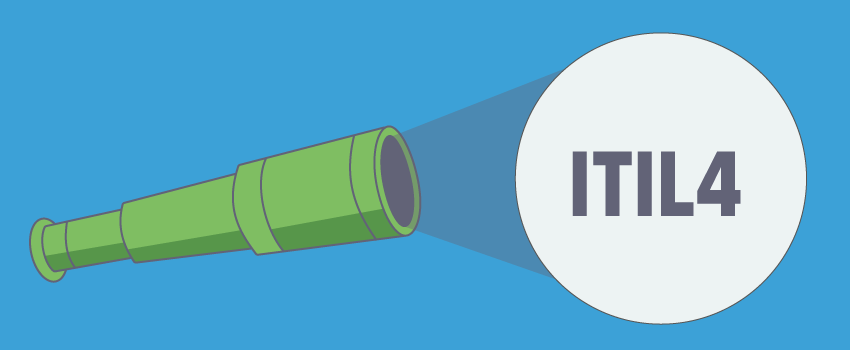
ITSM Basics: Is Your IT Help Desk Staffing Right?
Getting IT help desk, or IT service desk, staffing right can be very difficult. Especially when budgets are tight, and IT help desk jobs have been cut or vacancies not filled. Conversely, overstaffing the IT help desk has an opportunity cost – in that something else will have to be forgone as the help desk consumes more budget than it actually needs to.
Or, looking at IT help desk staffing levels from a different perspective, justifying the cost of additional help desk staff can be extremely difficult. Especially when the business, or more specifically the purse string holder, attributes the incident (or service request) backlog to the inefficiency of IT help desk people, practices, and IT service management (ITSM) technology rather than a mismatch between analyst staffing and ticket volumes.
Getting IT help desk staffing right
If you want to better understand the optimal number of staff required for your IT help desk (or IT service desk), then you need something like an “Erlang C calculator” … and yes, that’s Erlang C, that text wasn’t the result of my cat crawling across my keyboard.
Based on queuing theory (the mathematical theory of waiting in lines or queues) and the work of Agner Krarup Erlang, Erlang C calculators use the Erlang C traffic model to calculate the probability that an arriving customer will need to queue for service, as opposed to being served straight away. While IT help desks are about IT support, they’re also very much about people support and the efficient handling of end-user or customer calls and the queues that they may or may not have to endure. After all, delays affect employee productivity which in turn affects business operations and outcomes.
You and I (remember that I’m just a simple IT guy) don’t need to know the math behind the Erlang C traffic model shown next:

Just that the staffing calculation is based on:
- A – the total traffic in units of erlangs – a multiple of the call arrival rate and the average call holding time
- N – the number of servers, i.e. the number of IT help desk analysts (not the technology!).
With PW being the probability that a customer has to wait for help or service.
Thankfully, there are a number of free and paid-for Erlang C calculator tools that do the math for you, as well as allowing what if analysis to test changes in IT help desk traffic and staffing assumptions, such as the impact of potential call volume increases.
Here @Joe_the_IT_guy looks at how using Erlang C calculators can help you staff your #HelpDesk effectively. Click To TweetThe benefits of accurate IT help desk staff assessment
I might be teaching my grandmother to suck eggs here, but getting IT help desk staffing right is critical to efficient and effective IT support. So, using an Erlang C calculator can offer up a number of benefits, such as:
- Optimizing the use of scarce IT support people while also ensuring realistic expectations of IT help desk analyst performance
- Improving IT help desk service levels and the overall employee or customer experience
- Reducing the number of abandoned calls
- Reducing costs (if the IT help desk is actually overstaffed and running inefficiently)
- Forecasting, being able to respond to future changes.
Using an Erlang C calculator in anger
Most Erlang C calculator tools work with a number of IT help desk operational variables such as: average call volumes, average talk times, agent availability, average and maximum wait time, and abandonment rates, plus things like the average time spent on post-call administration (often called the wrap-up time).
It still sounds complicated, but using an Erlang C calculator is very much a “put tab A in slot B” approach. Importantly, it takes away the guesswork, and hopefully any legacy of previous staffing decisions that IT help desks might still be operating under.
By inputting your best estimates of some or all of the above variables, you can use the Erlang C traffic model (without needing to understand the model) to better understand:
- The required (optimal) number of IT help desk analysts, including variations based on daily and seasonal traffic peaks and troughs
- The number of calls an individual IT help desk analyst should be expected to handle per hour or day
- Average queue size and average wait, plus the maximum wait time
- The relationship between call talk times and queuing times; for instance, if calls take longer because analysts try to be more customer focused (or want to achieve a first-contact resolution target), then the resulting increase in queuing time might be anything but customer focused
- The percentage of callers that will need to wait in a queue, based on a certain staffing level, and for how long
- Caller wait times relative to agreed service level agreement (SLA) and projected SLA achievement
- How increasing or decreasing the number of IT help desk analysts will impact queuing times and abandonment rates
If you want to play around with a free Erlang C calculator then a quick Google search will find you a few to try. But please remember to be careful, free software might have an unexpected cost if your organization forbids the use of unapproved software or if your antivirus software isn’t up to date.
Please give it a go and I’d love to know how well your IT help desk (or IT service desk) is currently staffed. Please let me know in the comments.







